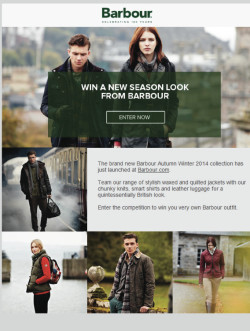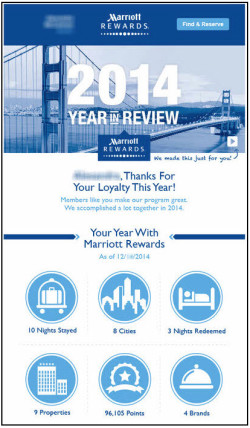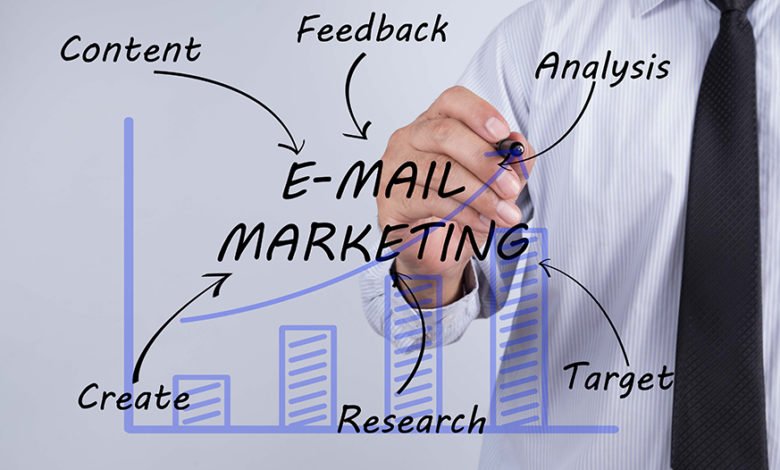With the right tools and knowledge, and following these tips, brands can make sure that their engagement with customers via carefully created email campaigns remains on track.
Omar Janabi says there is more to carrying out a truly effective email marketing campaign than simply having the right technology – marketers need to be creative, careful planners, constantly testing new tactics. Here are his top tips to perfecting the email art.
In the modern world of marketing, simply having the right technology to send out emails just doesn’t cut it any more. Brands must be increasingly creative with their email marketing, as well as carefully planning them and constantly testing new tactics, if they hope to stand out from the crowd.
While email marketing may seem like a relatively simple method, it can be challenging to get it just right. Here are six top steps to take to ensure brands can better engage with their email marketing.
1. Ensure deliverability and content engagement
The biggest problem we face today is deliverability – whether emails are actually arriving in the recipient’s inbox, especially in the public domain. Some of the biggest brands are still struggling with this stage, mainly as a result of the global volume of email addresses held by providers such as Gmail, Yahoo and Hotmail.
The first step here is making sure brands monitor open rates per domain and meet all the requirements that Gmail, Outlook, etc have for a trusted sender.
Another important factor is making sure email content is engaging even without images, in case they haven’t loaded right away. Brands can play with the pixels to make the images look good even before they are loaded.
Interactive content offers readers a unique experience. Use GIF content, links to embedded videos, surveys and other interactive experiences to further engage customers. And most important, make sure it is understandable and appealing at first sight.
Lastly, brands must not forget that the content should be adaptable across devices so that customers can read it, for example, on their Tablet, Phablet, iPhone or Apple Watch.
2. Increase open and conversion rate
Once emails have been delivered and read, brands must continue tracking the performance on their website or landing page. Heat maps are a great way to track how your customers are engaging with the campaign and the actual content.
Obviously, A/B testing gives brands another way to see how content is being perceived. Sending two different templates to the target audience will also enable brands to measure engagement. This will ensure a higher volume of open and conversion rates from customers. A/B testing key email templates is highly recommended at least once a quarter.
Preference centres are another great way to see what customers actually want to know about. Make sure that the process is simple and offer incentives to encourage users to provide their preferences. This should not only be done just when adding a user to the database, but should be a continuous and predictive process based on ongoing engagement, and overall customer behaviour. Brands need to have continued communication with their customers, by tracking their behaviour on websites as well as all other channels, including email, mobile apps and social media, to make sure their needs haven’t changed, and at the same time build an overview of customer preferences without explicitly and periodically asking for it. Barbour did this successfully when they generated 49,700 new email addresses from their target group, and 450,000 clicks to its website in only one month.

In order to support its overall e-commerce strategy, Barbour used Teradata Interactive to send relevant promotions and offers to customers via email.

Marriott created a Year in Review campaign that was informational, rather than transactional or offer-based, creating a personal touch that was entirely customer-focused.
3. Personalise content
Personalising content based on what brands already know about their customers is vital. Everyone wants that personal touch, and this is what builds customer and brand loyalty.
The key to personalisation is putting yourself in the reader’s shoes. Using all the data that brands have, they can send their customers the right message at the right time, and most importantly, using the right channel. An example of successful implementation using individualised content based on data is this campaign from the Marriott hotel chain. Marriott created an email campaign that delivered a summary of activity to each loyalty member on their system. This resulted in $2million worth of revenue based on this campaign alone, in addition to ultimately driving brand awareness and customer loyalty.
4. Automate your email marketing campaign
The next question is, how can brands accomplish this without making the process extremely time-consuming? Automation based on triggers is the key here, enabling brands to do more with the same resources.
For example, a travel brand may want to target their customers with additional activities for their holiday that they can book in advance. Using their background knowledge of these activities and their customer’s preferences, the travel company can distribute a triggered email to their customers, encouraging them to book these additional activities before they reach the final transaction stage. This results in a healthy increase of additional bookings and, of course, revenue.
However, it is important to review the lifecycle stages and decide what the best sources are for triggers, as well as where and how to engage.
5. Engage based on context
When sending an email campaign, brands must take into account the context in which it will be received. These factors could include time, location, device, and even weather.
In fact, according to research by Litmus, 53% of emails are now being opened on a mobile device. This means that customers can be almost anywhere when they receive the email. As such, it’s important that the email includes a phone number to make sure it’s clickable to enable the customer to directly dial in. You must also make sure the email is highly visual and isn’t text heavy, as no one has the time or attention span for this on mobile devices.
Send the right message, at the right time, on the right channel, and be sensitive to the moments customers may be receiving the content.
6. Orchestrate engagement across all channels, not only email
The final step is providing a consistent engagement and experience across all marketing channels. This means integrating email marketing with the rest of marketing channels, both online and offline. This raises questions such as how to be consistent across all touchpoints and channels and how to choose the best channel for each message. A customer may prefer to receive transactional emails in their inbox, while promotional offers may be preferable as mobile push notifications. This needs to be taken into account when planning the campaign to make sure brands are offering what the customer wants, when and how they want it.
While it’s true that it’s getting harder to do email well in the modern world of marketing, it’s not impossible. With the right tools and knowledge, and following the tips above, brands will ensure that customer engagement remains on track.








Leave your thoughts